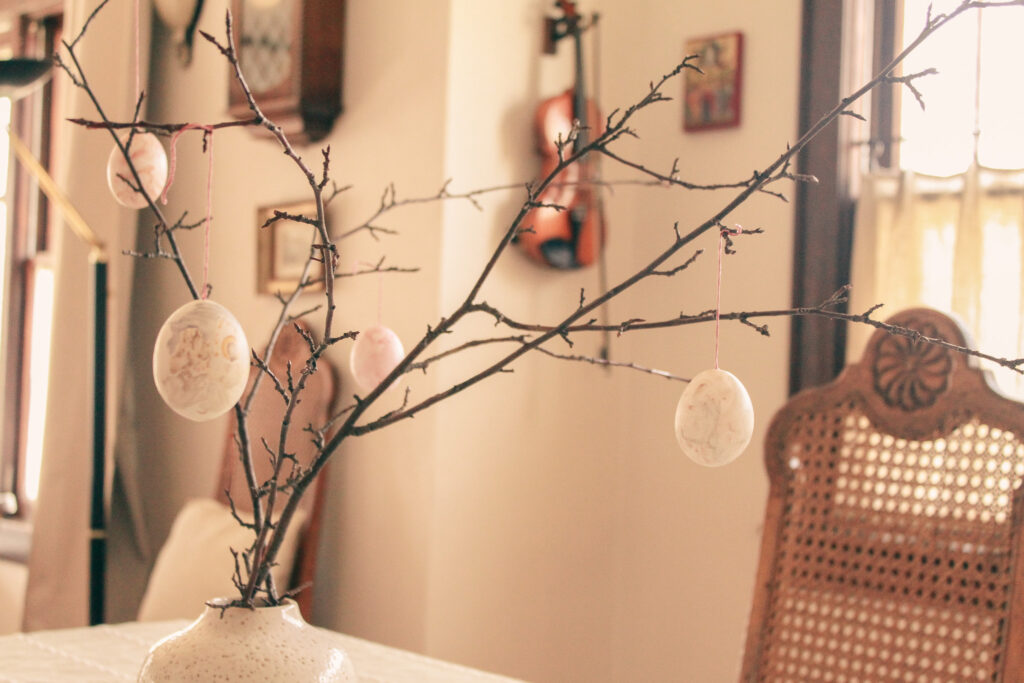
Easter Tree
Originating in Germany, the Ostereierbaum decorates many homes every Eastertide. Eggs are in abundance this time of year, and so are the customs related to them! This festive decoration, comprised of a tree or of branches standing or woven together with little eggs tied on string and hanging down like ornaments, catches the eye. It appears in Tasha Tudor’s book A Time To Keep and is brought to bear as a central, timeless illustration of Easter, right up there with Easter baskets filled to the brim with life and color, springtime lilies, and fine children’s dresses. The Ostereierbaum is a bright and interesting moment in many homes for Easter even to this day, a popular custom that represents many Christian symbols that have been central to Easter merriment for centuries.


The precise origin of the custom is unknown. Weiser records it as a historic German custom when he writes in the 1950s. The tree and branches naturally resemble the wood of the cross, much the same way the Christmas tree does in Christmastide. How much more fitting it is, then, to have an Easter tree when the victory been accomplished! Venantius Honorius Fortunatus hands down to us his most moving lines about this fruitful tree in two of the most beloved Passion hymns:
Faithful cross, true sign of triumph,
Be for all the noblest tree;
None in foliage, None in blossom,
None in fruit thine equal be;
Symbol of the world’s redemption,
For the weight that hung on thee!
LSB 454
O tree of beauty, tree most fear,
Ordained those holy limbs to bear:
Gone is thy shame, each crimsoned bough
Proclaims the King of Glory now.
LSB 455
Little eggs rest on the branches of the Ostereierbaum just like dew from heaven; each is a symbol of the tomb from which Jesus broke, throwing down death’s chains. The painting and decoration of the eggs itself is said to have become a Christian custom from the early centuries, and it is one shared to this day by nearly all despite the large and varied Christian landscape. We talk more about the history around Easter eggs in this post, but suffice to to say whether in the East or the West, the egg is a symbol known by all for its Eastertide significance.
Marrying the two symbols into one, the Easter tree images Jesus’ fruitful resurrection by way of the tree. We, too, share in God’s fruitfulness when he makes us his children through the font. So this year, consider making your own Easter tree. Involve the family: the kids can paint eggs and tie string. A steady hand ought to poke the hole through the shell in order to drain the egg; however, the rest is the perfect tradition to involve your household this time of year.
The Easter Tree
To make an Easter tree, first consider what you want to use for the tree itself. You could select a real or fake small tree or, as we did here, snip a few budding branches off a tree or large shrub your yard and prop them up in a vase. We have also seen a hanging wreath with eggs! Get creative with whatever you choose!
While you could purchase wooden or pre-prepared eggs, you might also choose to make your own. Plus, you’ll feel like you’ve worked a miracle to get the egg outside of the shell! There is a small learning curve, but it is rewarding to have affordable, homemade blown eggs:
- Wash the eggs before you begin.
- Place a small piece of tape on both he top and bottom of the egg. This will help prevent the shell from shattering when you make the holes.
- Take a needle and puncture two holes, one on each end where the tape is. A thimble or the back of a spoon works well to tap it gently through.
- Remove the tape and widen the bottom hole by gently prying away small pieces of shell with the tip of the needle. Make the hole approximately four times larger than the diameter of the needle hole.
- For the egg to come out, blow through the top hole to cause the it to be forced out through the larger, bottom hole. In order for this to work, the egg must be scrambled inside its shell. To do this, alternate shaking the egg, poking the needle in repetitively to rupture the membranes and blowing a little bit of egg out. Continue this process until all of the egg has been removed.
- Once hollow, rinse the egg out by running a little water into the larger hole, shaking, and blowing the water out. Wash the outside as well.
- Dry the egg and paint and decorate as desired.
- Hang the egg by tying a knot in a piece of string and working it into the top hole of the egg using your needle again. You may need to widen the hole just enough to force the knot through.
- Fix to your tree with a knot and repeat for all of the eggs!

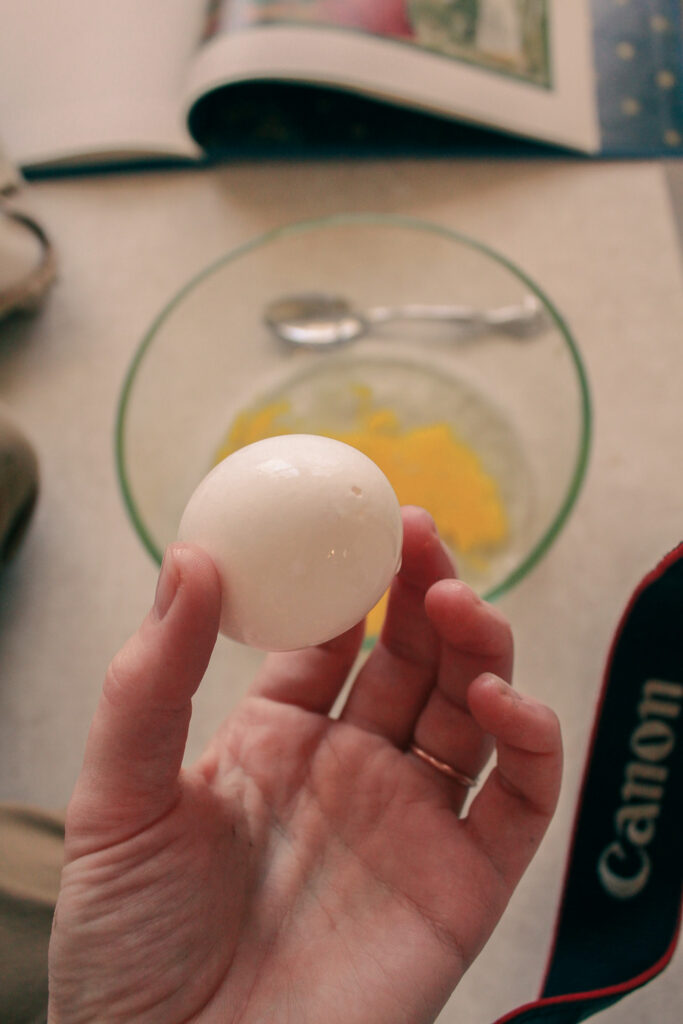
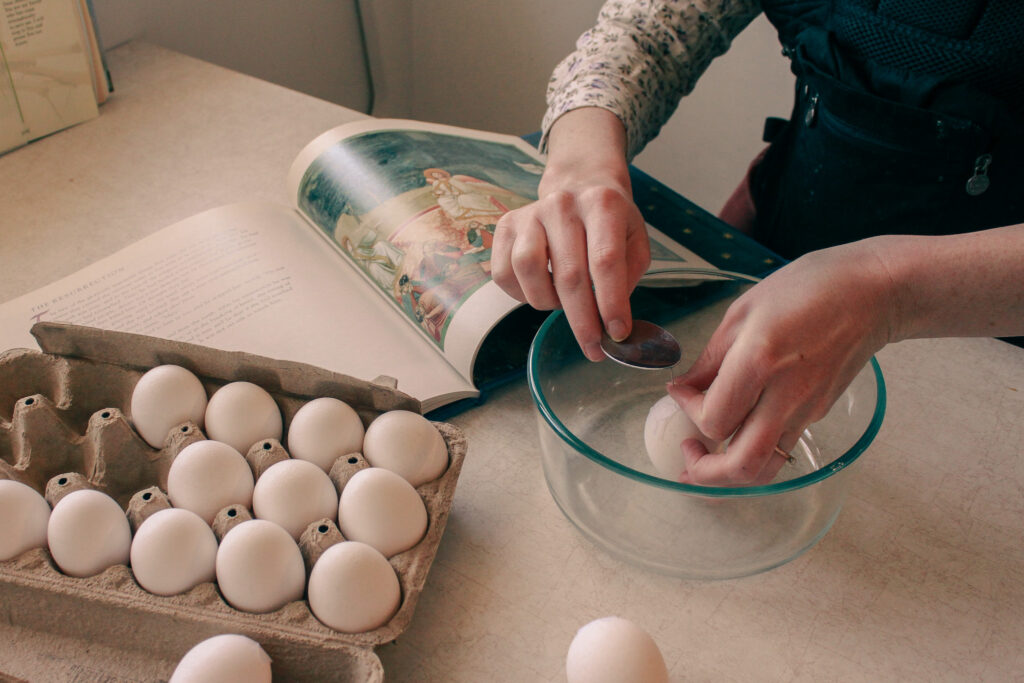
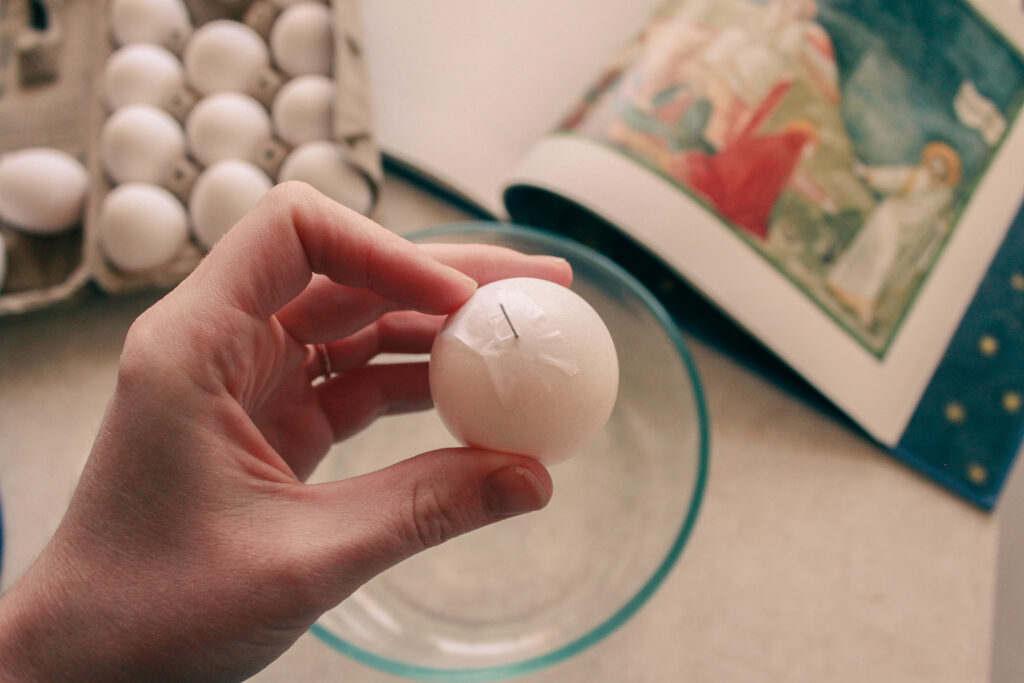
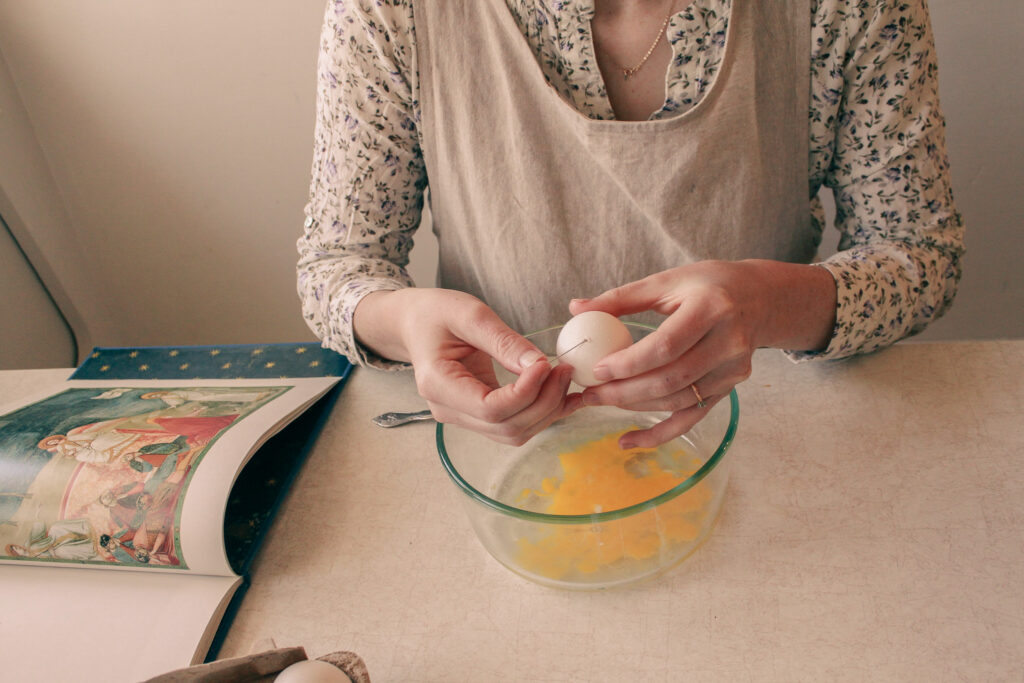




I did this years ago, but was inspired to try again by the photos of your beautiful eggs. Blowing those eggs clean is hard work! Did you make it through the entire dozen? By the way, what kind of paint did you use?
You are right; it is! My 4 year-old and I did 6 eggs, and we hope to do more this coming week because he enjoyed it so much! I used watercolor paints.